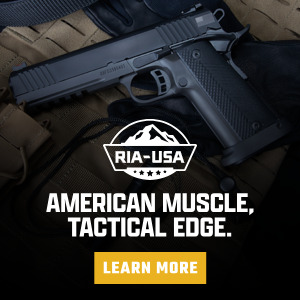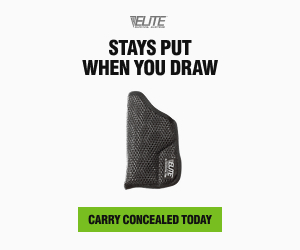Load development is designed to give a controlled comparison between two bullets in the same caliber, under the same conditions. The goal was not to prove which load is best in theory, but to see what the rifle prefers when every variable except bullet geometry is held constant. One hundred rounds were loaded: fifty with Hornady’s 200-grain ELD-X and fifty with the 168-grain ELD-X. Both used fresh Hornady brass directly from the manufacturer, CCI 200 primers, and Vihta-Vuori N560 powder. The bench setup consisted of an RCBS Summit Stage press with RCBS MatchMaster dies, the MatchMaster powder dispenser, Matchmaster Funnel, a Lee hand priming tool, and EP Innovations case holders.
While many alternative brass and projectile manufacturers are available and ready to use, Hornady provides a great balance of commonality and source ability for the average consumer. Renowned for their hunting ammunition and high-performance projectiles, Hornady is one of the most recognized brands across the entire country; and for good reason. They have a proven history with a price tag that doesn’t shock and awe.
Why Compare Bullets in One Run
Because of the delicate nature of barrel rifling and precision shooting comparing different grain and style projectiles at the same time can save unnecessary reloading and range trips. It’s a ‘one stop’ option to provide instant results in a smaller test run. It’s not perfect, but it’s a great starting point to begin narrowing down the results. I chose to load 200 Grain and 168 Grain ELD-X projectiles for use in the Savage 110BA Stealth – a firearm new to me but having existed for a while.
The 200-grain ELD-X carries energy farther and penetrates deeper, making it a hunting and long-range option where retained energy is the point. The 168-grain ELD-X is flatter, faster, and more forgiving in midrange work where drop correction is more critical than energy transfer. If these loads were tested weeks apart, with different brass or powder lots, the rifle’s preference would be obscured by reloading ‘noise’. Running them side by side in the same conditions ensures the rifle’s reaction and overall accuracy is the true signal of load compatibility. Likewise, my shooting can shift and loading these for a single range trip – and sore shoulder – offers more immediate and consistent results.
Case Preparation with Fresh Brass
Because the brass was fresh from the factory and not sized, the prep was intentionally minimal. Cases were inspected for defects like split necks or out-of-round rims. Only those over spec were trimmed which in this batch was none. Chamfering and deburring is unnecessary at this time, since Hornady has excellent QC on their production brass. Primer pockets were checked and body dimensions were left untouched to preserve the manufactured geometry. It was important to me to let the rifle show its behavior with cases in their original, factory new state.
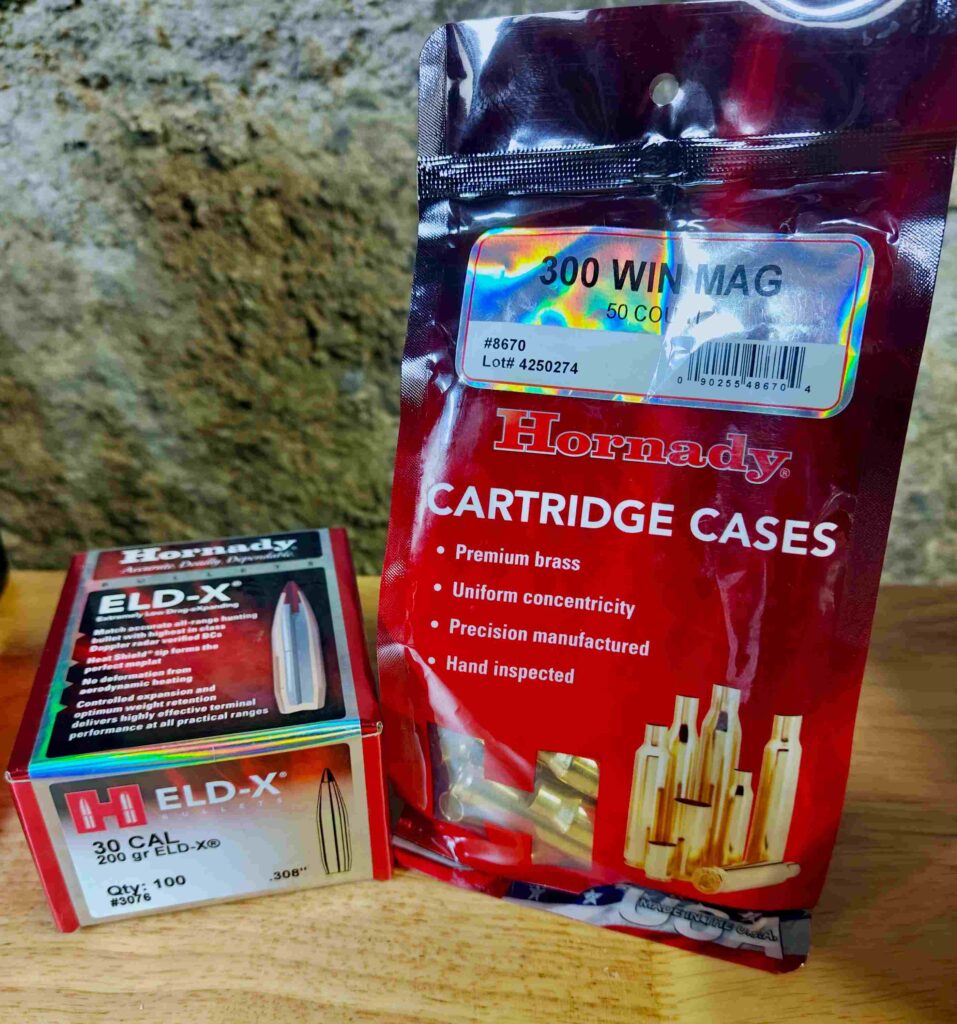
Hornady brass and projectiles are easy to find at most physical and online retailers like MidSouth Shooters.
A small sample of cases were weighed to log wall variance. That information explains later differences in OAL and pressure behavior and is treated as data, not a defect. In this evaluation, the purpose was not to force conformity but to record what fresh, unsized brass produced in real time. This is also important when utilizing different brands, which I will write about soon. Peterson and Lapua often have different internal dimensions and wall/neck thicknesses compared to Hornady, so it’s worth taking stock of what You’re working with from the very start.
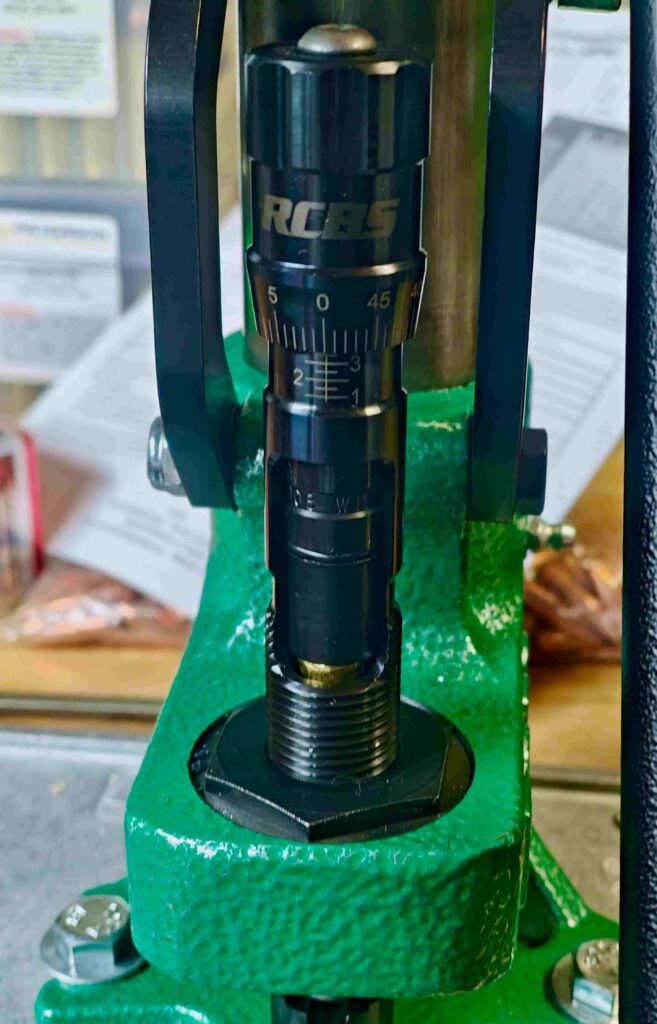
Completely set in place the Matchmaster dies pushed the projectile right where it needed to be.
Load Data
Load data is a serious discussion and there are a lot of different books that often provide conflicting information. Vihta-Vuori provides some load data, although the book I had on hand didn’t provide the data for 300 Winchester Magnum. Lee and Lyman are both excellent resources for consistent loads. It is NEVER a good idea to take load data from online resources that conflict with published resources. It can cause a lot of issues with shortened barrel life, overpressure spikes, and even risk squibs. Please, i beg of you, start with recommended load data and work it from there. If you feel the need to go off book, at least know the math to prove safe loading.
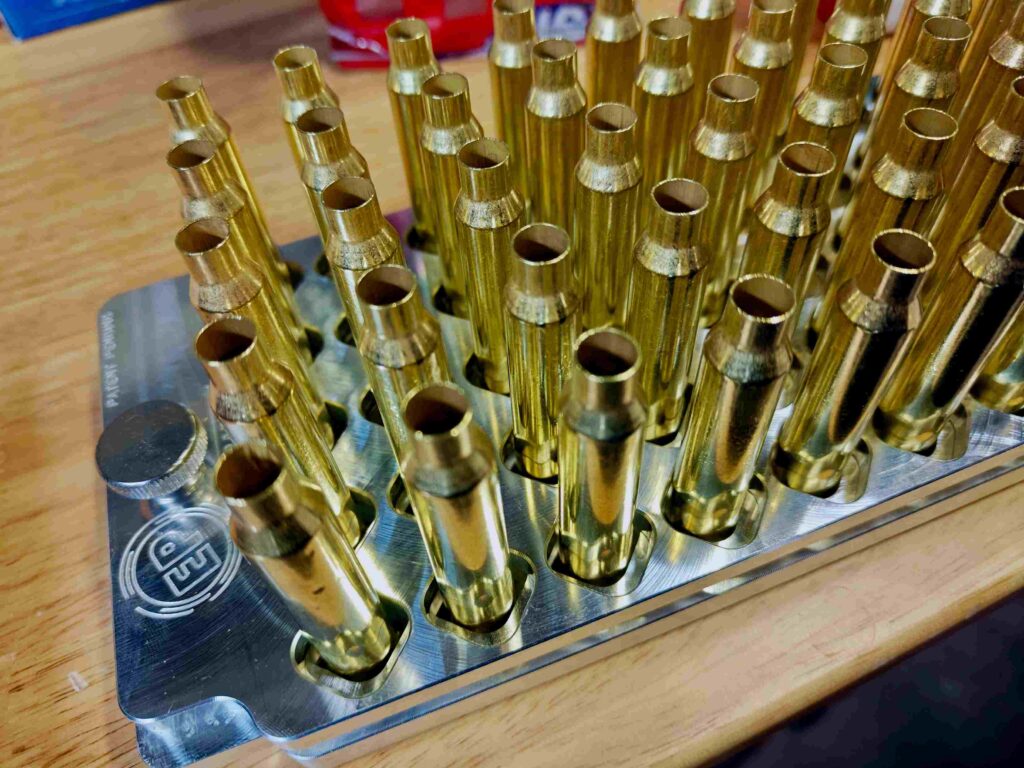
Keeping cases upright is very important for proper powder management.
Priming and Powder Charging
I used an off-press Lee hand priming tool, partially for tactile feedback. I quickly changed to the RCBS hand primer just for ease of use. No hate to Lee, it’s a great tool, I just didn’t have the best shell holder and RCBS doesn’t require specialized shell holders. CCI 200 primers were seated just below the threshold of the case base. The choice of a hand tool over bench priming was deliberate: the feel of primer seating provides an early warning if something is off and a habit of checking seating depth is formed with every primer ensuring proper seating in the primer pocket.
Powder was dispensed with the RCBS MatchMaster. Charges were set to the ladder test baseline, with increments selected based on manual guidance. In this case, I chose to increase by 0.5-1.0 grain increments. It’s a large jump up, but I’m not looking for perfection, just a baseline to build on.
Because I don’t use a Matchmaster powder dispenser often, I’ll confess that several hours went into relearning the system and settings. It’s an excellent powder dispenser, once it’s set up properly. Unfortunately, I felt that I knew more than the manual which took more time than I had available. Once a powder charge was dropped, the Matchmaster Funnel was excellent in putting all the powder right where it needed to be, in the case. I can’t tell you how impressed I was by the funnel. It was simple and dissipated all the notorious static cling.
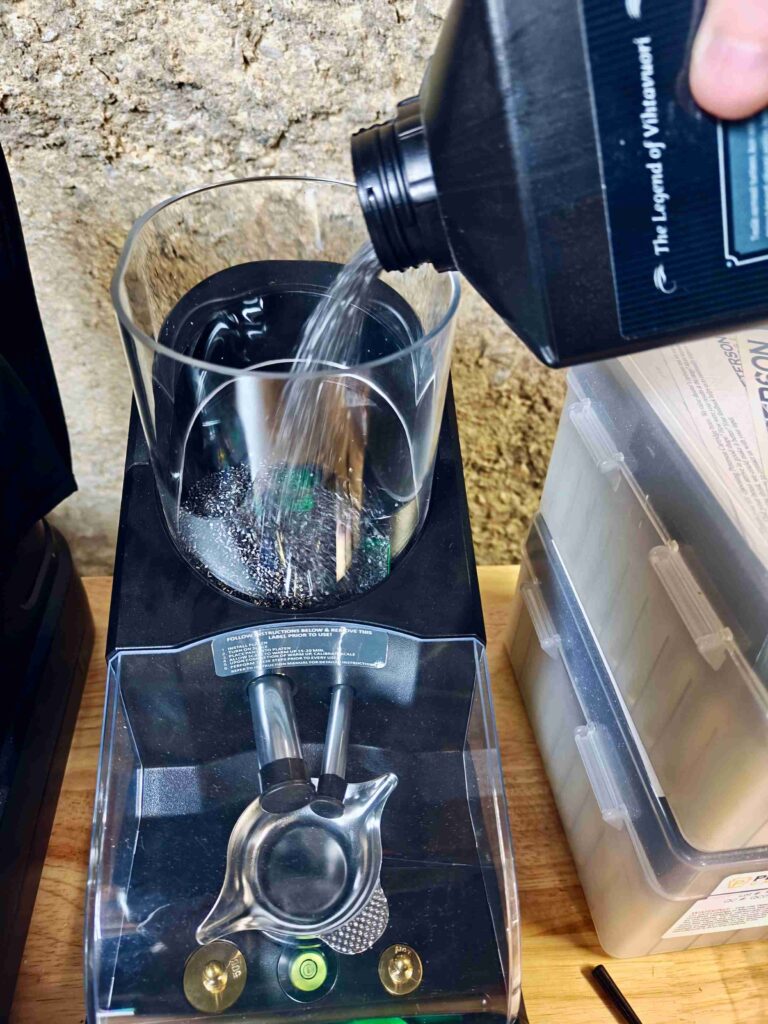
Using N560 powder in the Matchmaster Powder Dropper was easy after relearning the setup.
Crimping was Intentionally Avoided
Being new, fresh brass consistent neck tension held the bullets securely and will provide a predictable release during firing. Not only is this better for bolt action rifles, but it makes the reloading time faster and more convenient. A heavy crimp would have introduced pressure variables and masked any issues in neck uniformity. Since the brass was fresh and not sized, the cases were already optimized for first firing. That was an acceptable trade for this controlled test and good prep for the second reload requiring only a neck sizing in the future.
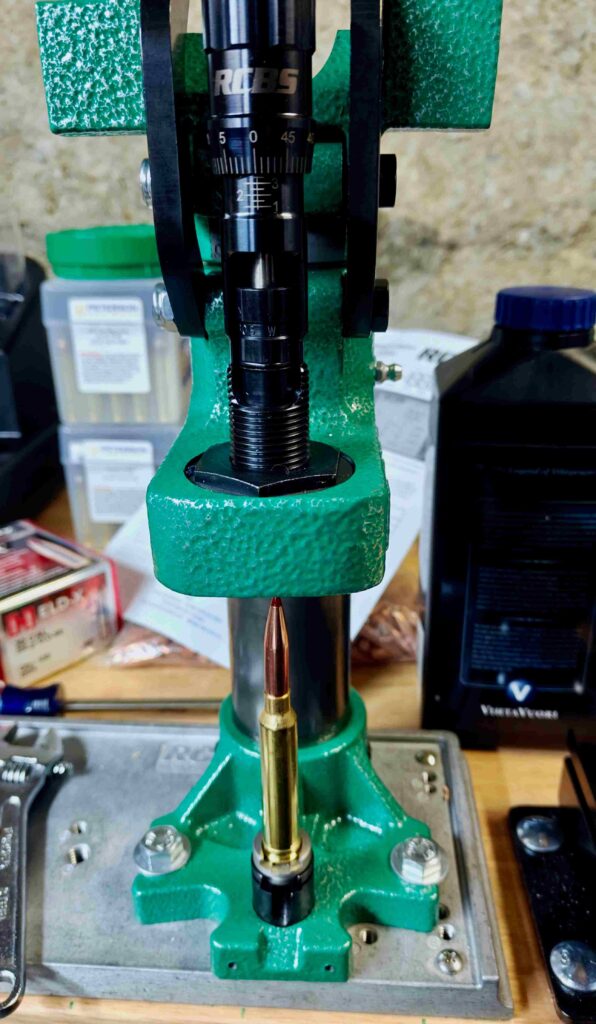
Matchmaster dies in the RCBS Summit Press made fine tuning projectile seat depth easy and visual.
Seating and Observed OAL
Seating revealed the small but important variations. The RCBS MatchMaster seating die was set to a 3.430 stop. Both bullet types were seated using this mechanical stop to establish a common standard. In practice, the average loaded OAL measured at 3.440. That 0.010 difference is expected when bullets differ in ogive profile and bearing surface length, and when fresh brass varies slightly in neck thickness. I’ll contribute this partially to brass bounce, as I did not anneal the necks before loading.
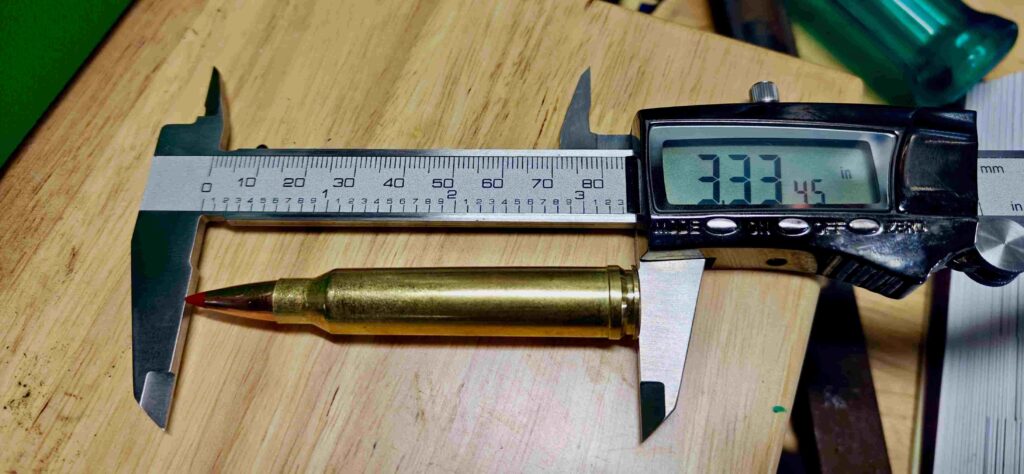
Overall seat depth and length was consistent with minimal thousandths deviation.
The choice to retain bullets with neck tension only made seating force critical; something that the Matchmaster dies are capable of accommodating. Calipers tracked OAL, but for further refinement a comparator would measure ogive-to-gage distance more precisely.
Ladder Testing Methodology
I want to start this by saying Ladder Testing is not the best or final testing requirement. In fact, it’s not even a good test for overall accuracy. This is meant to only serve as a baseline for best projectile weight and powder charge for moderately accurate shots. There are additional tests that will greatly improve accuracy with any charge and all projectile weights like: jump – the amount of distance a fired projectile must travel before reaching the rifling of the barrel, projectile seating depth – to limit the jump, neck tension variances – to release the projectile slower or faster depending on powder burn, and barrel time – how long or short the projectile stays in the barrel.
In this test charge weights followed a ladder-test philosophy. Increments were set at 0.5 grains when the manual spread was narrow and 1.0 grain when the spread was wide. Five rounds were built at each increment. Each group was labeled, and all variables were logged: charge weight, OAL, primer type, powder type, case manufacturer, and seating notes. On the range these will contribute to accuracy more than just a standard reloads.
It’s also worth noting that powder is not cheap. It’s gotten incredibly expensive over the years and in a caliber like 300 Winchester Magnum or a powder like Vihta-Vuori, using more than a pound of powder to ladder test – at 60 to 70 grains each round – it can become incredibly expensive very quickly.
Post Range Obserservations for the Future
Chronographing every round provided the real measure. Standard deviation and extreme spread prove more valuable than raw velocity for predicting group behavior. The heavier bullet’s tighter SD will theoretically make it a stronger performer in accuracy even when average velocity is lower. Fresh, unfired brass changes character after fire-forming, so cases need to be inspected after strings for neck shifts, pocket loosening, and early pressure signs. Flattened primers, sticky extraction, or bolt lift resistance are treated as hard stop conditions and may require the rest of the string to be disassembled for future use.
Application of Each Load
The reason I chose these two specific grain wights was convoluted and somewhat difficult to explain but stems from prior experiences. 200-grain projectiles are the choice when energy and penetration matter. The 168-grain load is for flatter shooting when drop management is the deciding factor. With a 1/10 twist rate, 160-175 grain projectiles are the best choice and there’s math to prove it; math I’m not going to bore you with here. So, for me, I wanted an accuracy load and a hunting load to add more versatility to a heavy hitting caliber. Both will show clear behavior patterns in the same rifle, under the same environmental conditions, and both will demand further validation. Consistency across days with different environmental factors will really be the true test.
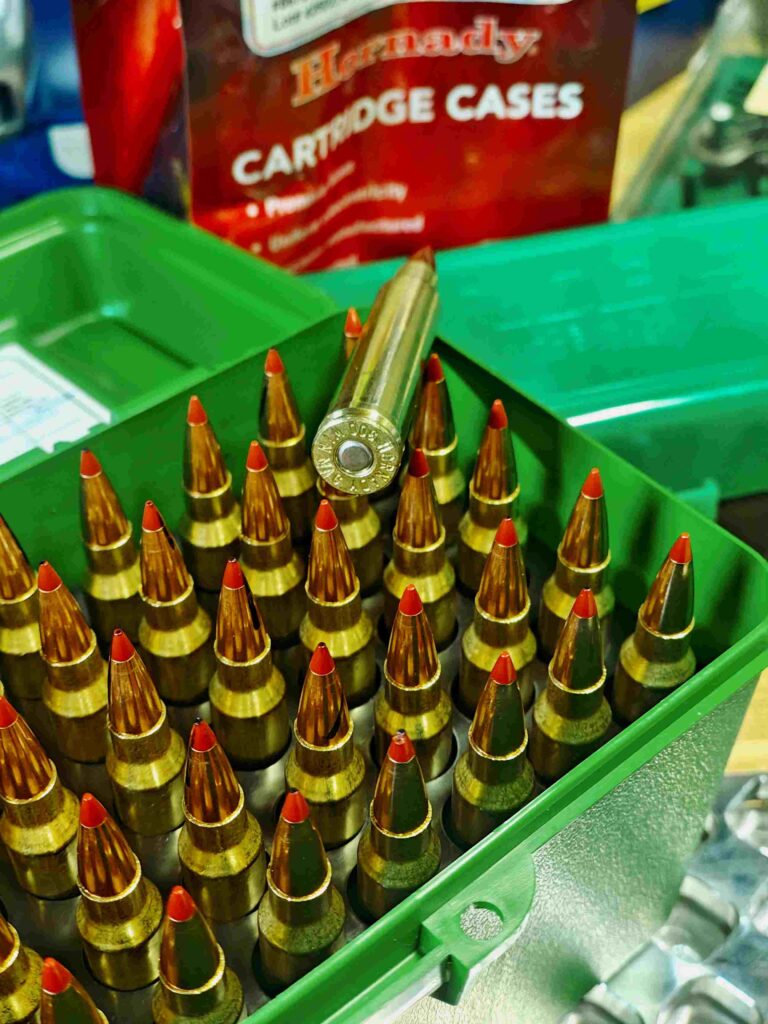
50 rounds of a ladder test ready to go!
Documentation and Future Plans
The log captured every part of the run. It noted the brass type and condition (fresh Hornady, unsized), primer type and lot (CCI 200), powder lot and dispenser index, seating stop at 3.430, measured OAL averaging 3.440, and observations of seating force and neck tension. Anomalies must be recorded directly, not rationalized away.
Once these results are in, the real testing begins. It involves new ladder testing utilizing the best results and loading up and down in 0.1/0.2 increments. Then comes seating depth and bullet jump. With a powder dispenser like the Matchmaster, tolerances down to .01 can be measured and accounted for ensuring the most consistent and accurate loads once a charge is finalized.
You Own Precision Journey
Reloading is experimentation conducted under control. This run of fifty 200-grain ELD-X and fifty 168-grain ELD-X rounds, built on fresh Hornady brass with neck tension only, will give a clean comparison without distraction from secondary variables. The observed 0.010-inch difference between seating stop and measured OAL was not error but data, logged for future refinement. The rifle’s response during the ladder test and chronograph work will dictate which bullet and which node earns its place as the preferred load. This is just the beginning and not the end of a developed load. It must be tested, verified, and documented. The only thing that will hold anyone back, especially in larger calibers like the 300 Winchester Magnum, is how much powder the wallet can buy.


